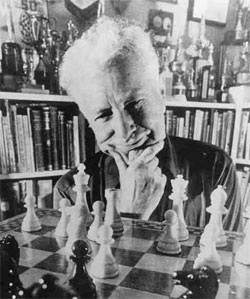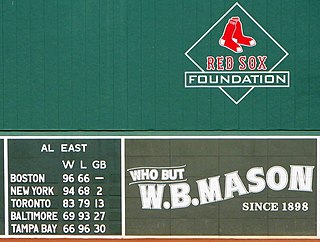
The Elo rating system is a method for calculating the relative skill levels of players in zero-sum games such as chess or esports. It is named after its creator Arpad Elo, a Hungarian-American physics professor.
In vector calculus, the divergence theorem, also known as Gauss's theorem or Ostrogradsky's theorem, is a theorem relating the flux of a vector field through a closed surface to the divergence of the field in the volume enclosed.
In probability theory, odds provide a measure of the probability of a particular outcome. Odds are commonly used in gambling and statistics. For example for an event that is 40% probable, one could say that the odds are "2 in 5","2 to 3 in favor", or "3 to 2 against".
Pythagorean expectation is a sports analytics formula devised by Bill James to estimate the percentage of games a baseball team "should" have won based on the number of runs they scored and allowed. Comparing a team's actual and Pythagorean winning percentage can be used to make predictions and evaluate which teams are over-performing and under-performing. The name comes from the formula's resemblance to the Pythagorean theorem.
A draw or tie occurs in a competitive sport when the results are identical or inconclusive. Ties or draws are possible in some, but not all, sports and games. Such an outcome, sometimes referred to as deadlock, can also occur in other areas of life such as politics, business, and wherever there are different factions regarding an issue.
In ice hockey, the point statistic has two contemporary meanings. As a personal statistic, points sum the total goals and assists scored by a player. As a team statistic, points are awarded to a team to assess standings or rankings.
Vigorish is the fee charged by a bookmaker for accepting a gambler's wager. In American English, it can also refer to the interest owed a loanshark in consideration for credit. The term came to English usage via Yiddish slang which was itself a loanword from Russian.
The following are statistics commonly tracked in ice hockey.

In some North American sports, the phrase games behind or games back refers to a common way to reflect the gap between a leading team and another team in a sports league, conference, or division.
In games and sport, a tiebreaker or tiebreak is any method used to determine a winner or to rank participants when there is a tie - meaning two or more parties have achieved a same score or result. And a tiebreaker provides the additional criterion or set of criteria to distinguish between the tied participants and establish a clear ranking or winner. In some sports, it is known as a countback.
Three points for a win is a standard used in many sports leagues and group tournaments, especially in association football, in which 3 points are awarded to the team winning a match, with no points awarded to the losing team. If the game is drawn, each team receives 1 point. Many leagues and competitions originally awarded 2 points for a win and 1 point for a draw, before switching to the three points for a win system. The change is significant in league tables, where teams typically play 30–40 games per season. The system places additional value on wins compared to draws so that teams with a higher number of wins may rank higher in tables than teams with a lower number of wins but more draws.
In a group tournament, unlike a knockout tournament, there is no scheduled decisive final match. Instead, all the competitors are ranked by examining the results of all the matches played in the tournament. Typically, points are awarded for each match, with competitors ranked based either on total number of points or average points per match. A special type of group tournament is the Round-robin tournament, in which each player plays against every other player.
In statistics, the Kendall rank correlation coefficient, commonly referred to as Kendall's τ coefficient, is a statistic used to measure the ordinal association between two measured quantities. A τ test is a non-parametric hypothesis test for statistical dependence based on the τ coefficient. It is a measure of rank correlation: the similarity of the orderings of the data when ranked by each of the quantities. It is named after Maurice Kendall, who developed it in 1938, though Gustav Fechner had proposed a similar measure in the context of time series in 1897.
The mathematics of gambling is a collection of probability applications encountered in games of chance and can get included in game theory. From a mathematical point of view, the games of chance are experiments generating various types of aleatory events, and it is possible to calculate by using the properties of probability on a finite space of possibilities.
The marathon standings for the Swedish Hockey League (SHL) (formerly named Elitserien) is an accumulated table for the Swedish Hockey League, the current top Swedish ice hockey league, since it was inaugurated in the 1975–76 season. The marathon standings, updated by the Swedish Ice Hockey Association (SIHA), presents an overview of the overall regular-season records for all teams who have played at least one season in the SHL. The table is sorted after the highest number of total points.

The 2018–19 NCAA Division I men's ice hockey season began in October 2018 and ended with the Frozen Four in April 2019. This was the 72nd season in which an NCAA ice hockey championship was held, and United States college ice hockey's 125th year overall.
The 2022–23 Champions Hockey League was the eighth season of the Champions Hockey League, a European ice hockey tournament. The tournament is competed by 32 teams, with qualification being on sporting merits only. The six founding leagues will be represented by between three and five teams, while seven "challenge leagues" will be to be represented by one team each.







